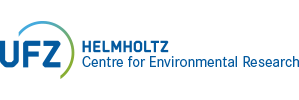Publication Details |
| Category | Text Publication |
| Reference Category | Journals |
| DOI | 10.1016/j.jenvman.2025.127167 |
Licence  |
|
| Title (Primary) | Bioavailability and phyto-extractability of metals in a peat-amended agricultural soil under climate stress |
| Author | Sánchez, N.; Merbach, I.; Drabesch, S.; Blagodatskaya, E.; Jamoteau, F.; Keiluweit, M.; Bachelder, J.; Tarkka, M.; Muehe, E.M. |
| Source Titel | Journal of Environmental Management |
| Year | 2025 |
| Department | BZF; BOOEK; AME |
| Volume | 394 |
| Page From | art. 127167 |
| Language | englisch |
| Topic | T5 Future Landscapes T7 Bioeconomy |
| Supplements | Supplement 1 |
| Keywords | metal fractionation; phytoextractability; sequential extractions; sustainable agriculture; plant nutrition |
| Abstract | Climate-induced mobilization of harmful metals in soils with a pH below 7 threatens food safety through plant uptake. While organic amendments like peat are known to immobilize metals, it remains unclear how their immobilization effectiveness changes under future climate scenarios and whether there is an optimal amendment threshold before immobilization turns into re-mobilization. This study assessed how varying peat input levels (3, 5 and 8 %) and projected climatic conditions (+4 °C, +320 ppmv CO2) affect metal fractionation, bioavailability, and uptake by a metal-tolerant plant in historically contaminated soils. Intermediate 5 % peat levels enhanced metal immobilization via organic matter complexation, reducing exchangeable Zn and Cd ∼2-fold compared to 3 % peat, despite acidification. At high 8 % peat input, a 0.65-unit pH decline and increased dissolved organic matter reversed this trend, increasing exchangeable Zn and Cd > 2-fold relative to 5 % peat. Chemical equilibrium modeling (WHAM VII) confirmed greater metal complexation with dissolved organic matter at higher 5–8 % peat levels. Under future climatic conditions—elevated temperature and CO2—metal immobilization improved at low 3 % peat input, likely due to stable organic matter and functional group buffering. Nevertheless, metal re-mobilization occurred at higher peat inputs, likely due to enhanced peat decomposition. Despite these variations, plant Cd uptake remained low across peat and climate treatments. This emphasizes peat's protective role against Cd while maintaining the plant's nutritional status for Zn. This study highlights the dual effects of peat amendments: intermediate levels optimize metal immobilization, but excessive amendments may destabilize harmful metals, especially under future conditions. |
| Persistent UFZ Identifier | https://www.ufz.de/index.php?en=20939&ufzPublicationIdentifier=31291 |
| Sánchez, N., Merbach, I., Drabesch, S., Blagodatskaya, E., Jamoteau, F., Keiluweit, M., Bachelder, J., Tarkka, M., Muehe, E.M. (2025): Bioavailability and phyto-extractability of metals in a peat-amended agricultural soil under climate stress J. Environ. Manage. 394 , art. 127167 10.1016/j.jenvman.2025.127167 |
|
